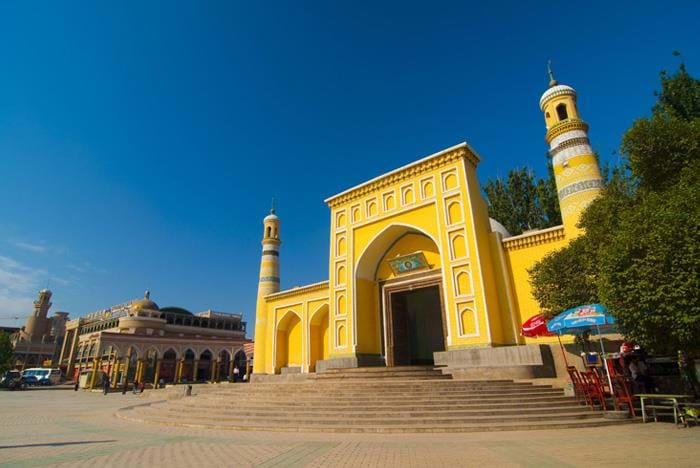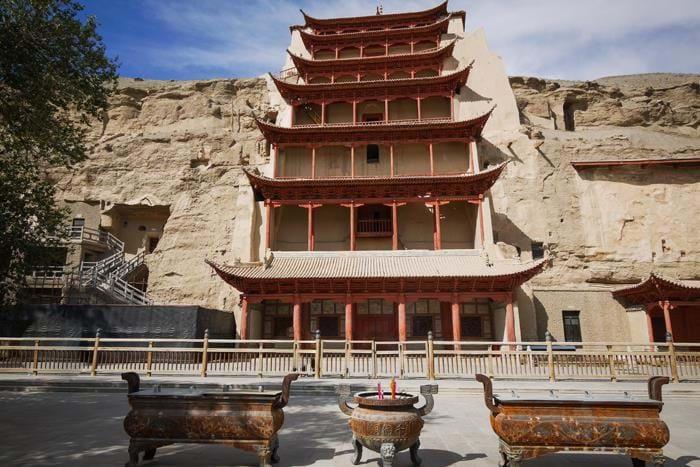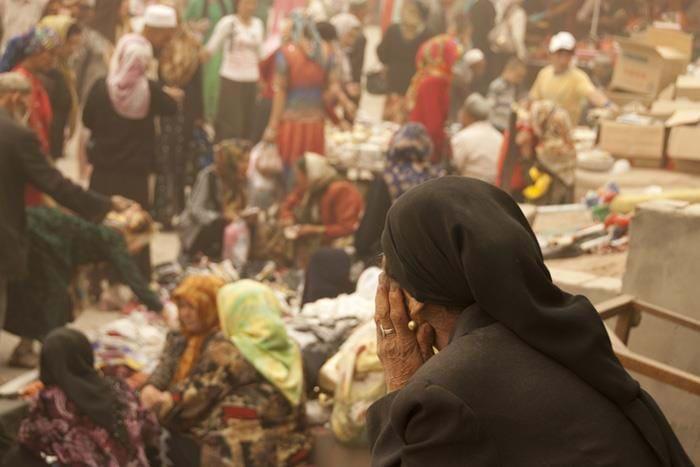China 19.05.2016 Updated: David Abram
With help from our travel consultants at the Old Fire Station in Ealing, David Abram identifies some of the astonishing locations featured in Sam Willis’ BBC4 Silk Road series.
Dr Sam Willis’ whistle-stop romp along the Silk Road, from Xi'an in China to Venice on the Adriatic, is perfect Sunday night TV fodder: a visual feast with oodles of travel inspiration, and a smattering of historical context just to make you feel it’s good for the old grey matter. I’m already planning to follow in the good doctor’s footsteps – such was the splendour of those turquoise-domed Timurid tombs, drifting dunes in the Gobi and snow-capped Tian Shan mountains.
To which end, with assistance from TI’s China and Central Asia specialist, Shivjit Bagga, I’ve put together a tick list of must-see sights, as featured in the series and TransIndus’ Legends of the Silk Road tour. This first instalment covers the section filmed in China. I’ll be doing another one soon on the locations in Uzbekistan, as showcased in programme 2.
Silk Road will be available to view on the BBC iPlayer for the next few weeks. Catch it while you can!

Xi'an
As Sam Willis reminds us, Xi'an was the official starting point of the Silk Road and still serves as the most popular springboard for modern journeys along the ancient trade artery. The paths west across the great deserts from the former capital were not known when the city’s most famous sight, the Terracotta Army, was buried midway through the second century BC. But imperial tombs survive outside the city from the later Han era, during which time the diplomat Zhang Qian was the first Chinese traveller ever to explore the distant lands beyond the Great Wall... and survive to tell the tale.
Featured in Sam Willis’ first programme was a vestige of the old Silk Road often overlooked by visitors to Xi'an, the ‘Great Mosque’ – an exquisite building blending classical Chinese and Islamic styles.

Jiayuguan and the Hexi Corridor
A necklace of oases enabled caravans to travel across the Gobi to the so-called ‘Jade Gate’ in the far west of China, where the fort of Jiayuguan marked the limit of Chinese civilization. Framed by a suitably epic backdrop of snow-capped mountains, the fortress has been impeccably restored in recent years.

Mogao Caves, Dunhuang
The ‘Caves of a Thousand Buddhas’ at Mogao near Dunhuang are the greatest surviving monuments of the Silk Road. Excavated from around 400AD, its 500 or so chambers are all that’s left of a once much larger complex adorned with resplendent murals and sculpture. Most of the ancient treasures secreted here were plundered in the early 1900s by foreign archaeologists such as the Hungarian-British explorer Aurel Stein, though Dunhuang’s surviving clay sculptures, giant Buddhas and frescoes more than repay the effort it takes to reach this remote site.

Crescent Lake and the Singing Dunes
Some of the highest dunes in western China – in fact the entire world – lie a short cycle ride south of Dunhuang. Nestled at their foot is a small, half-moon-shaped lake, next to which a Buddhist shrine sits amid the incongruous greenery – one of the loveliest sights of the Silk Road. Camel rides, sand tobogganing and parascending are among the activities on offer to modern visitors!

Turpan
This atmospheric Uyghur oasis town on the northern Silk Road owes its existence to an extraordinary feat of ancient engineering: a 3,000-mile network irrigation tunnels and wells – known as karez – that collect and channel meltwater from the nearby mountains. Turpan’s elevation, at 30m below sea level, ensures freezing winters and scorching summers which, combined with the ample supply of water, have always made it a perfect place for growing fruit, notably grapes. Visitors may sample wine produced at the famous Loulan vineyard visited by Sam Willis in his first programme – the Cabernet Sauvignon is the perfect accompaniment for spicy Uyghur kebabs and salads!

Astana Cemetery
A succession of large walled cities sprang up in the desert around Turpan over the centuries. Some of these eroded ruins on the outskirts may be visited, among them Astana, where Sam Willis encountered a collection of mummies in a cemetery of brick-lined tombs.
Kashgar
Having skirted the edges of the Taklamakan Desert, the northern and southern Silk Roads converged on Kashgar, Xianjing’s westernmost city. A market for trans-Himalayan caravans for over 2,000 years, the town still attracts streams of farmers and nomads flock for its famous Sunday market, the Yekshenba Bazaar. Hand-woven silk, kilims and jade jewellery from nearby Khotan can be bought at bargain prices here.

Atlas Silk
The traditional ikat-style silk cloth worn on formal occasions by Uyghur women is a speciality of Khotan (‘Hotal’), four hours southeast of Kashgar across the Taklamakan Desert. It’s mostly woven by hand, in small factories or homes. In tandem with Sam Willis’ Silk Route series, the BBC produced a wonderful 30-minute documentary on how the cloth is produced, focusing on a family of local weavers. As well as being a great advert for atlas silk, the programme served as a compelling window on everyday life in this remote community, where the women juggle their textile work with child care, cooking and managing irascible husbands – often with considerable humour, which the sub-titled translations convey to vivid effect!







